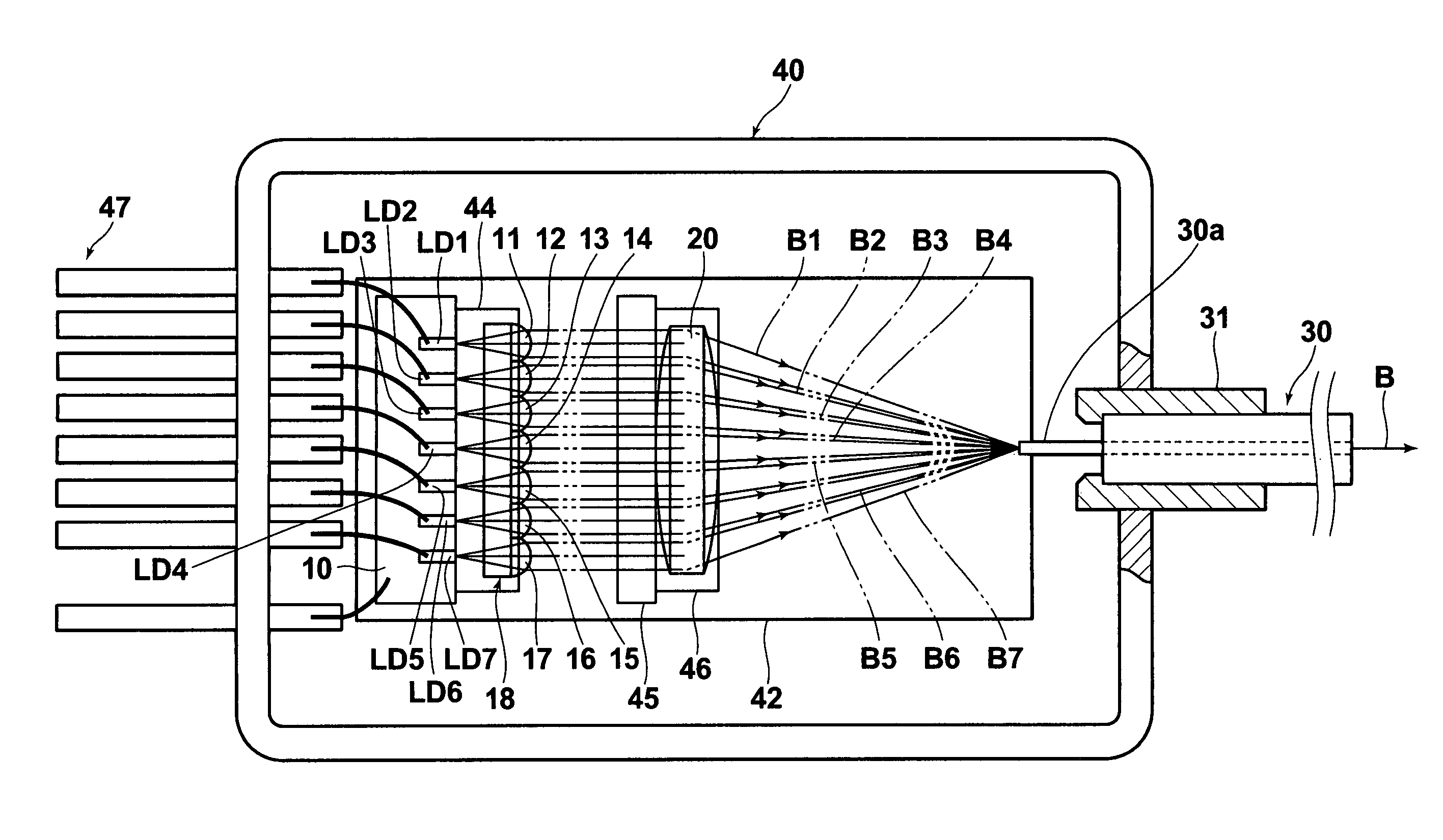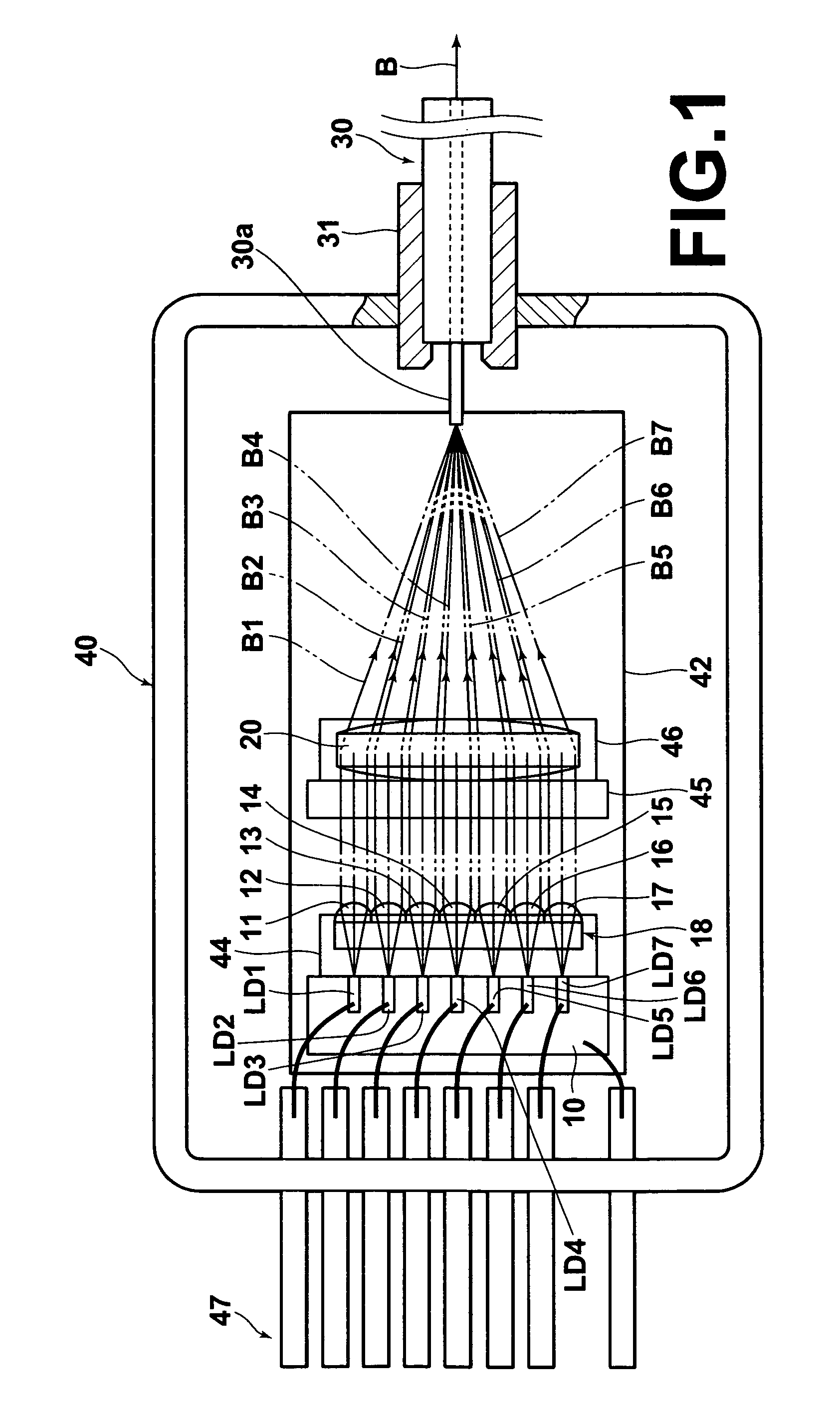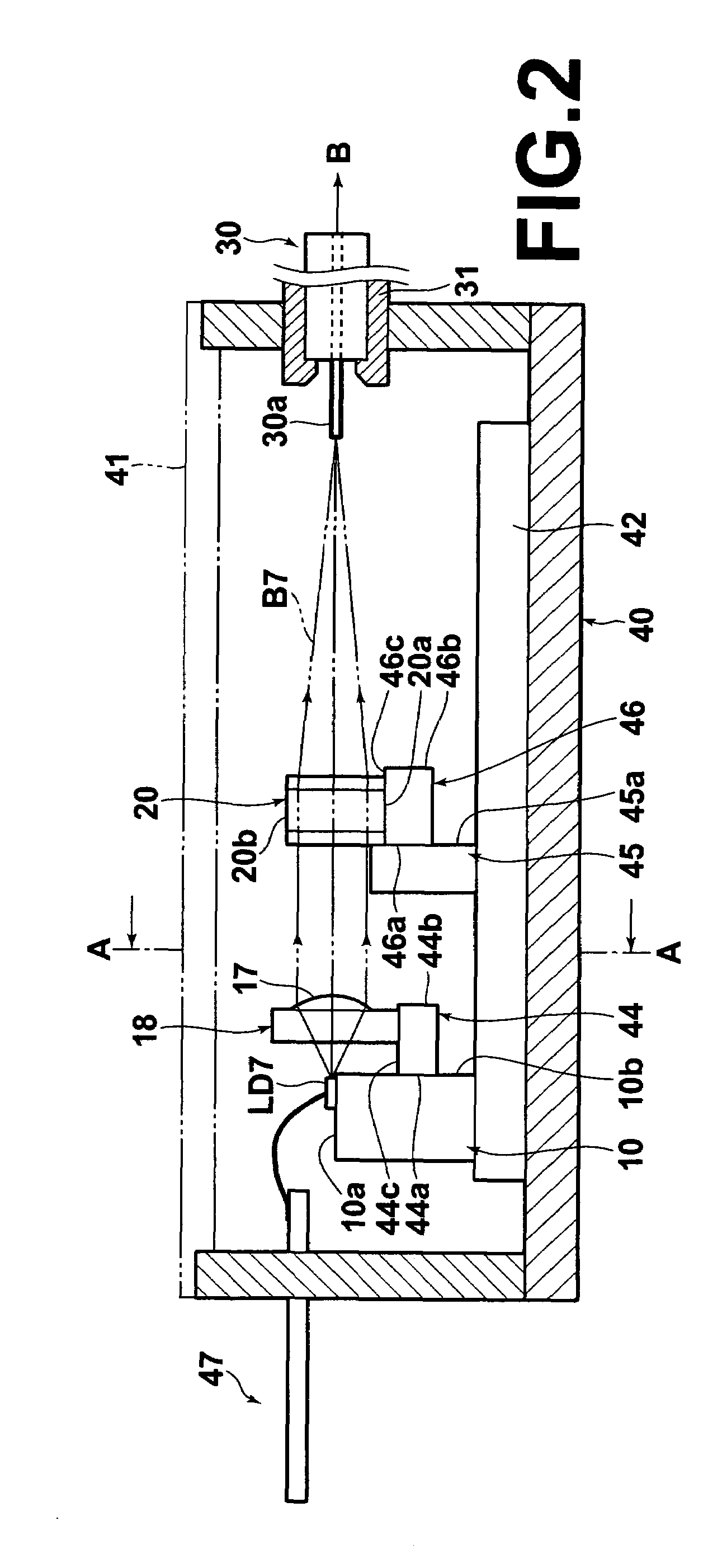Laser apparatus and method for assembling the laser apparatus
a laser and laser beam technology, applied in the field of laser beams, can solve the problems of reducing the input efficiency of laser beams which are condensed by the condensing lens and enter the optical fiber, and similar problems can occur
- Summary
- Abstract
- Description
- Claims
- Application Information
AI Technical Summary
Benefits of technology
Problems solved by technology
Method used
Image
Examples
Embodiment Construction
[0042]An embodiment of the present invention is explained in detail below with reference to drawings.
Construction
[0043]FIGS. 1 and 2 are respectively plan and side views, partly in cross section, of a laser apparatus according to an embodiment of the present invention, and FIG. 3 is a front view of a rear half of the laser apparatus which is cut at the cross section A-A indicated in FIG. 2. The laser apparatus according to the present embodiment is a high-luminosity combined-ultraviolet-light laser apparatus (which may be hereinafter referred to as a combined laser apparatus or a laser-light source).
[0044]As illustrated in FIGS. 1, 2, and 3, the laser apparatus according to the present embodiment comprises a plurality (e.g., seven) of GaN-based semiconductor laser chips LD1, LD2, LD3, LD4, LD5, LD6, and LD7, a collimator-lens array 18, a condensing lens 20, and a multimode optical fiber 30. The GaN-based semiconductor lasers LD1 through LD7 are arrayed on and fixed to a heat block 1...
PUM
 Login to View More
Login to View More Abstract
Description
Claims
Application Information
 Login to View More
Login to View More - R&D
- Intellectual Property
- Life Sciences
- Materials
- Tech Scout
- Unparalleled Data Quality
- Higher Quality Content
- 60% Fewer Hallucinations
Browse by: Latest US Patents, China's latest patents, Technical Efficacy Thesaurus, Application Domain, Technology Topic, Popular Technical Reports.
© 2025 PatSnap. All rights reserved.Legal|Privacy policy|Modern Slavery Act Transparency Statement|Sitemap|About US| Contact US: help@patsnap.com



